Homemade Vegetable Bouillon Cubes
This post may contain affiliate links. Read our disclosure policy here.
Want to make your own “ready-to-go” vegetable bouillon cubes so you don’t have to buy them anymore? It’s easier than you might think!
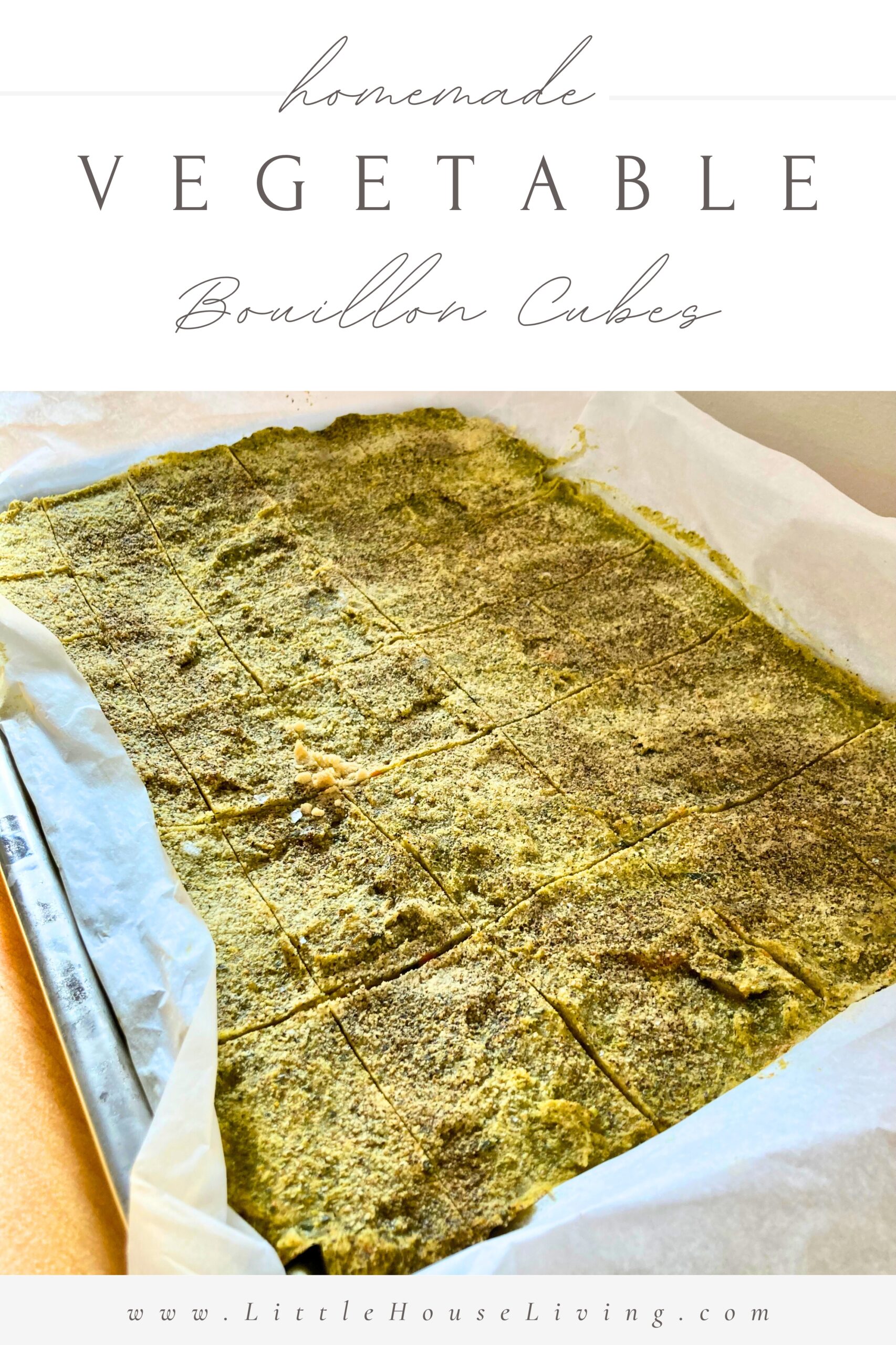
Making Your Own Broth Cubes
I’ll be completely honest….I haven’t been making as much chicken broth as I used to make. The price of chicken has gone up so tremendously (even to raise your own chicken) that it hardly seems worth it sometimes.
No, instead, I’ve been making a lot of vegetable broth. It’s delicious, it’s filled with healthy veggies, and I always have ingredients for it on hand.
But I typically store my homemade broths ready to go in the freezer. That takes up a lot of space. Space that I don’t have.
So, I thought I’d experiment with making my own Vegetable Bouillon Cubes. It was so much easier than I expected; they take up MUCH less space in the freezer, and they have such an amazing flavor.
Let’s dive right in!
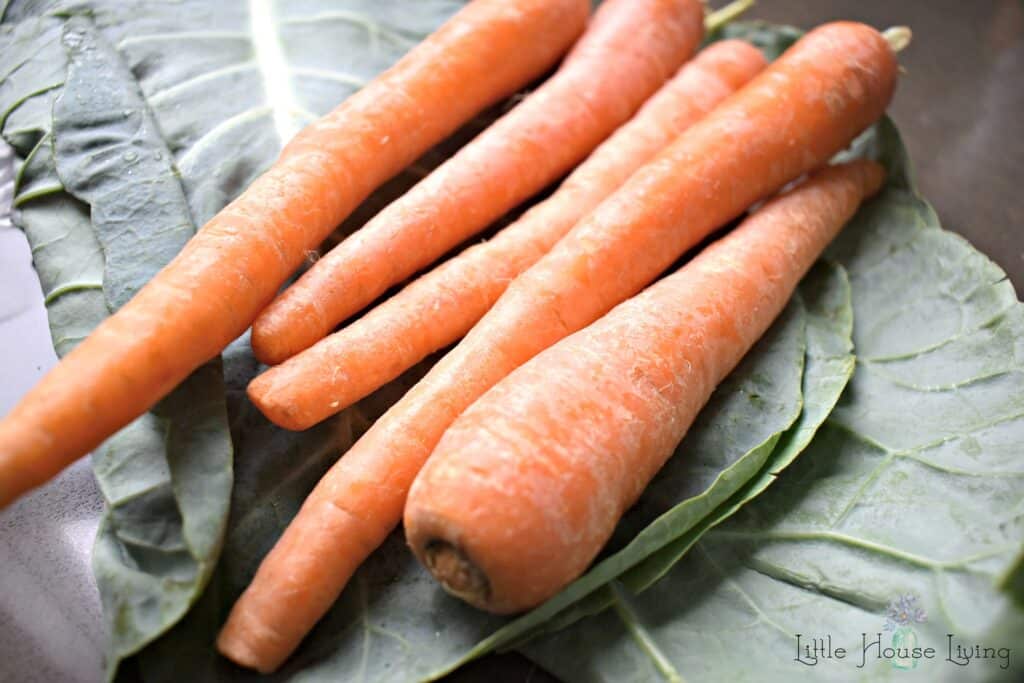
Ingredients in Vegetable Bouillon Cubes
- Vegetables. I know this is a given, but it’s hard to tell you specifically what kinds of vegetables to use when you can use just about anything! Favorites of ours are carrots, celery, bok choy, parsnips, celeriac, onions, leeks, and shallots. Use what you have!
- Onion Powder, Garlic Powder, and Salt. These help give your broth and extra flavor boost like a store-bought bouillon cube would do.
You will need a tiny amount of water and oil as well to cook the veggies down and to blend them up. Otherwise, that’s it. Keep it simple!
This recipe is naturally vegan, dairy-free, and gluten-free.

Step By Step Instructions for How to Make Your Own Vegetable Bouillon Cubes
Start by cleaning and chopping all of your vegetables. You are going to mash them down later so the pieces don’t need to be perfect but also don’t make them too big or they will have a hard time cooking down.
Place all of the vegetables in a Dutch oven or a large stockpot with a lid. Add a little olive oil so they don’t burn to the bottom and turn them on medium-low heat. Stir occasionally and cook with the lid on until the vegetables start cooking down and getting soft.
Once soft, mash up your vegetables with a potato masher. You could also use an immersion blender if you have one. Make sure they are all soft.

Remove the vegetable mixture from the heat. Put small amounts in a blender with a small amount of water. If your vegetables made their own liquid while cooking down, use that. Don’t add too much water, only enough to blend them.
Blend the vegetables in small batches until smooth and pureed.

Place a piece of parchment paper on a baking dish or baking tray with sides. Use a spatula to spread the vegetable puree love the parchment paper until you have an even layer.
Sprinkle your spices in an even layer over the top of the spread. I do this instead of adding it in to have better control over how much is going onto each piece of the bouillon. I use onion powder, sea salt, and garlic powder and am pretty generous with my sprinkling. We want it to taste good!

Place the tray in the freezer without covering it. Let it freeze until solid (at least 24 hours).
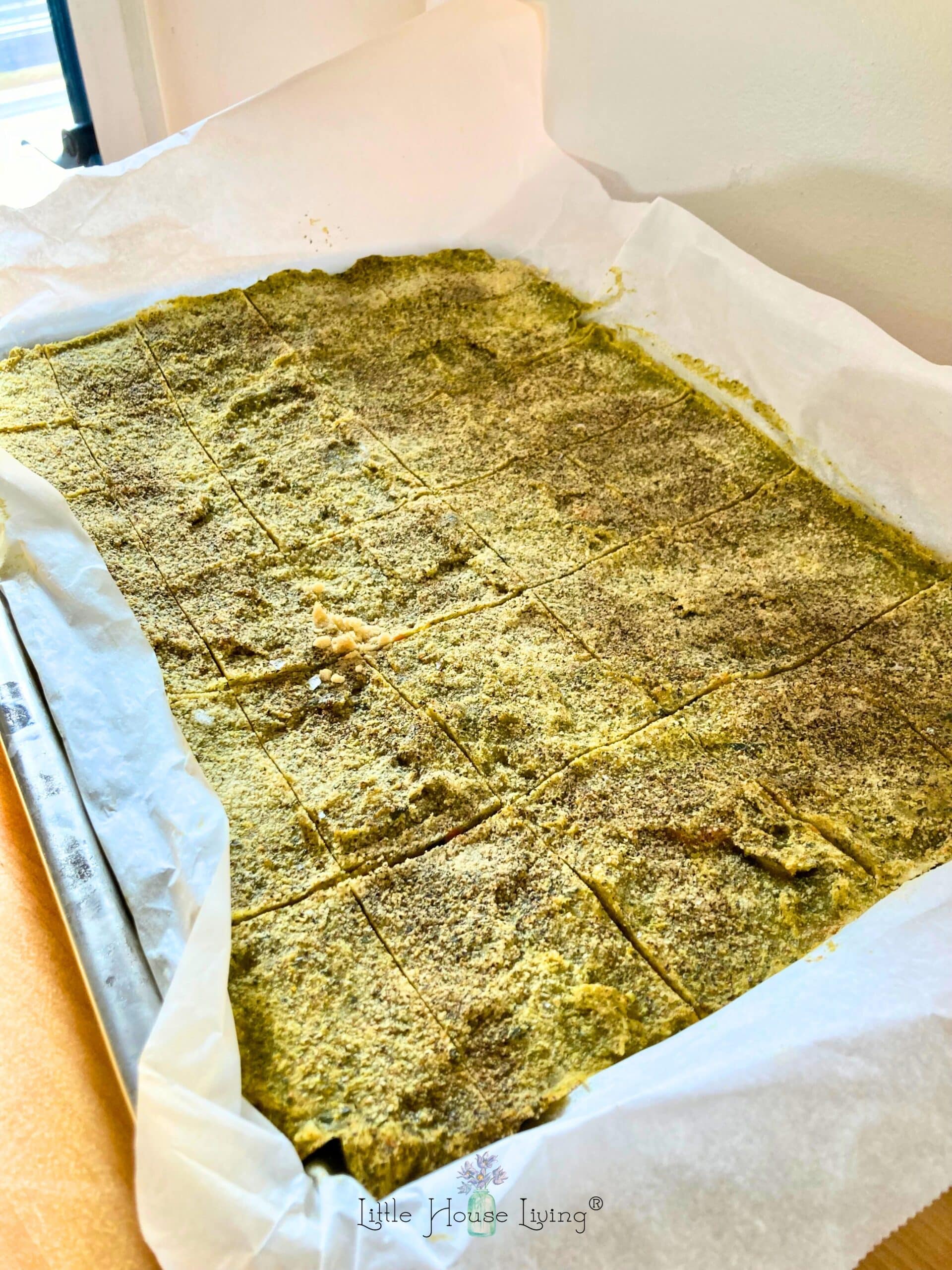
Once your tray is frozen, remove it from the freezer and cut it into pieces. The piece size is really up to you (but should be at least 1″x1″ for enough flavor) and will depend on what you use the bouillon for. I cut mine into many different sizes so that I have a choice of what to use.

Place the pieces of bouillon into a freezer bag and store them in the freezer to use later. When you are ready to use, you can add the bouillon to hot water, and it will begin to thaw immediately. I add it directly into my soups. Again, how much you use will be dependent on how much flavor you need in the recipe.

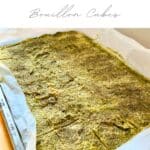
Homemade Vegetable Bouillon Cubes Recipe
How to make your own vegetable bouillon cubes with real and simple ingredients.
Ingredients
- 10 cups Vegetables celery, carrots, onions, etc are all good
- Spices I use garlic powder, onion powder, and sea salt.
Instructions
-
tart by cleaning and chopping all of your vegetables. You are going to mash them down later so the pieces don’t need to be perfect but also don’t make them too big or they will have a hard time cooking down.
-
Place all of the vegetables in a Dutch oven or a large stockpot with a lid. Add a little olive oil so they don’t burn to the bottom and turn them on a medium-low heat. Stir occasionally and cook with the lid on until the vegetables start cooking down and getting soft.
-
Once soft, mash up your vegetables with a potato masher. You could also use an immersion blender if you have one. Make sure they are all soft.
-
Remove the vegetable mixture from the heat. Put small amounts in a blender with a small amount of water. If you vegetables made their own liquid while cooking down, use that. Don’t add too much water, only enough to blend them.
-
Blend the vegetables in small batches until smooth and pureed.
-
Place a piece of parchment paper on a baking dish or baking tray with sides. Use a spatula to spread the vegetable puree love the parchment paper until you have an even layer.
-
Sprinkle your spices in an even layer over the top of the spread. I do this instead of adding it in to have better control over how much is going onto each piece of the bouillon. I use onion powder, sea salt, and garlic powder and am pretty generous with my sprinkling. We want it to taste good!
-
Place the tray in the freezer without covering it. Let it freeze until solid (at least 24 hours).
-
Once your tray is frozen, remove it from the freezer and cut it into pieces. The piece size is really up to you (but should be at least 1″x1″ for enough flavor) and will depend on what you use the bouillon for. I cut mine into many different sizes so that I have a choice on what to use.
-
Place the pieces of bouillon into a freezer bag and store them in the freezer to use later. When you are ready to use, you can add the bouillon to hot water and it will begin to thaw immediately. I add it directly into my soups. Again, how much you use will be dependent on how much flavor you need in the recipe.
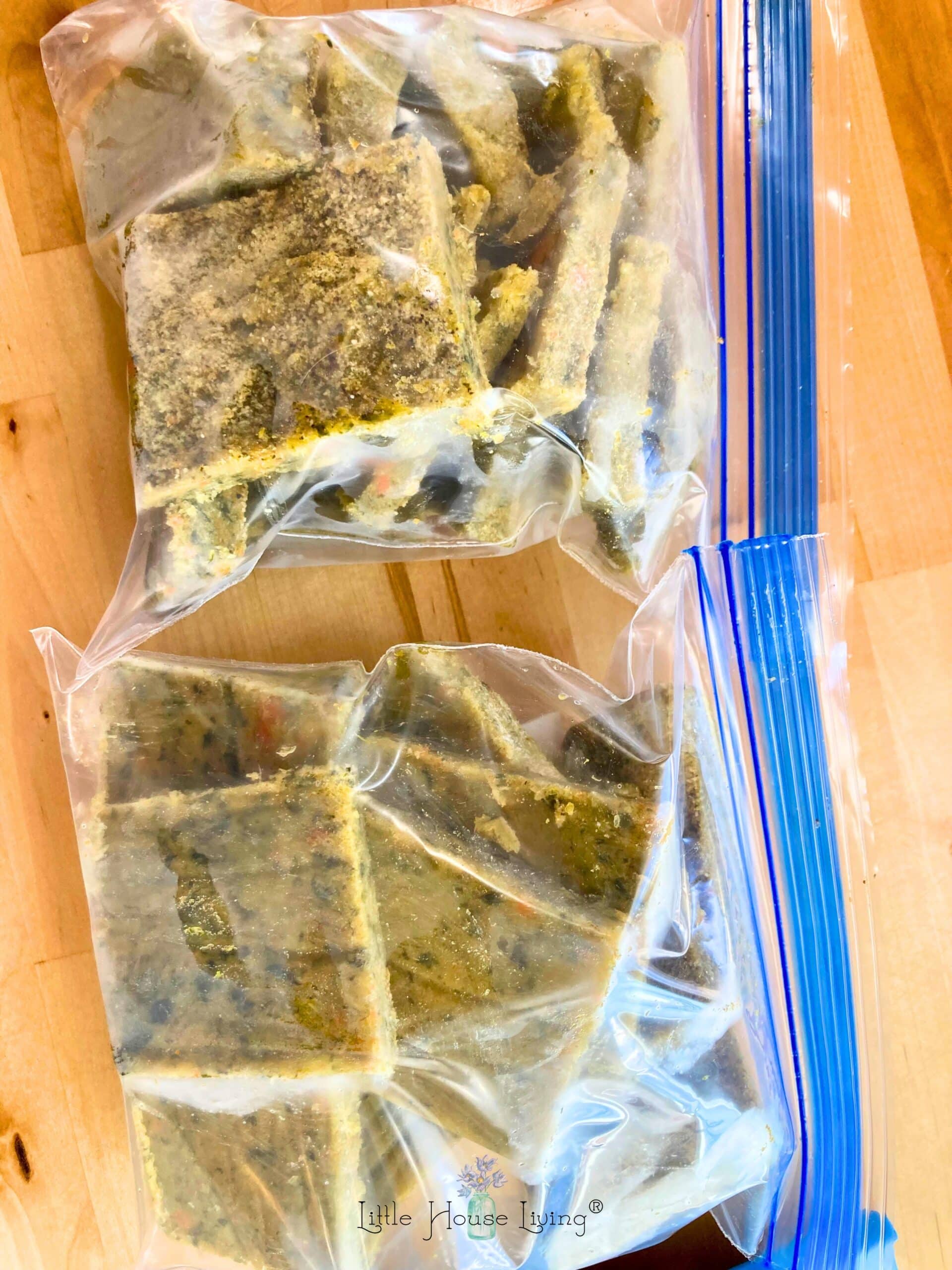
Storing Vegetable Bouillon Cubes
Store the frozen vegetable bouillon cubes in a freezer bag in the freezer until you are ready to use them. Do not thaw before use, just place them in hot water or directly into soups.
These are not a 1-1 substitution for vegetable bouillon powder which is much more concentrated. You will need a large amount of these homemade cubes in your recipe.
Common Questions About Vegetable Broth
Vegetable Bouillon typically contains things like dehydrated vegetable powders, yeast extract, msg, xanthan gum, maltodextrin, wheat flour, sulfites, caramel color, natural flavor, tbhq, and other unnecessary ingredients.
You could. I haven’t tried it this way and it seems like it’d be more expensive (unless you’ve made your own). Remember that it would be much more concentrated so you will not want to use as much and will need to watch the amount of spices you use.
Turmeric, parsley, and rosemary are other nice spices that could easily be added in a dried or fresh form. I add both turmeric and parsley to mine in it’s fresh form.
Our favorite use is it to add them directly to soups and pastas. You could also add it to ramen, stews, rice, curry, or other foods that could use a flavor boost.
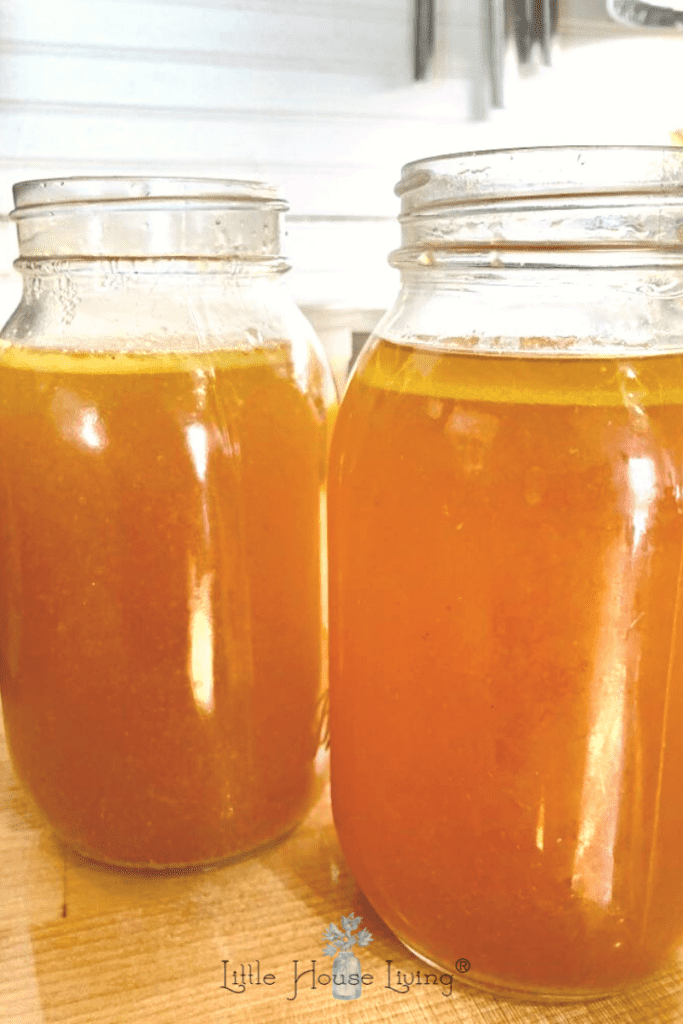
More Homemade Broth Ideas
- How to Store Homemade Chicken Broth (4 Methods!)
- Canning Chicken Broth – Simple Tutorial
- Freezing Chicken Broth
- How to Cook a Whole Chicken Easily and What to Do With It

Merissa Alink
Merissa has been blogging about and living the simple and frugal life on Little House Living since 2009 and has internationally published 2 books on the topic. You can read about Merissa’s journey from penniless to freedom on the About Page. You can send her a message any time from the Contact Page.
This recipe for Homemade Vegetable Bouillon Cubes was originally posted on Little House Living in November 2023.



This is pure genius! I can’t wait to try it.
GREAT idea!!
This is amazing! I love it so much!! Definitely going to be using this often at our home.
Thank you so much about
Vegetables tubs
I like your ideas
Thanks for this. I was looking for a good bouillon recipe that did not have yeast in it as I have a sensitivity to it. This sounds perfect.
Hi this is a question more than a reply. Like the idea of veggie bullion but could we not add the water and dehydrate the mi xture and put in a jar. Thks hc
Yes, although I haven’t tried it yet I’m sure that you could dehydrate it.
Fantastic idea!! Thanks so much!!! I am having the same situation with making homemade chicken broth. Whole chickens have gone high lately so I am waiting for price drop. I like veggie broth better most times anyway.